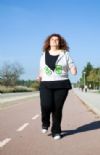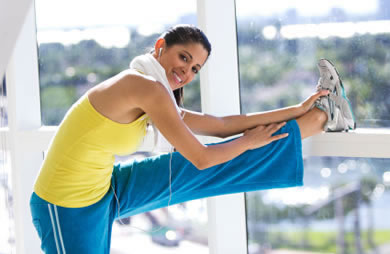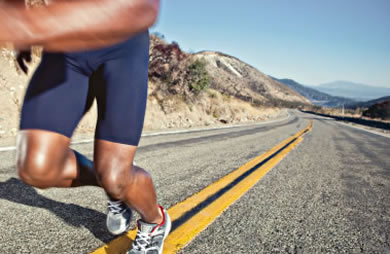|
By Beth Donovan (~INDYGIRL) Being disabled or having chronic pain or illness makes exercise difficult if not impossible. Some days I wake up and just want to stay under the covers in bed, where the pain is at its best level of control. That's no kind of life and led me to weighing 460 pounds. After joining SparkPeople, I learned that short bouts of fitness add up. I started my fitness journey by going to my doctor/nurse practitioner, and they set me up with in-home physical therapy. There are plenty of physical therapy options depending on your insurance coverage. I've done pool exercise, mild gym exercise, total gym exercise, and table exercise. You should see your doctor or health-care professional before considering which option might be best for your disability. Together, you can decide whether you might be able to do some of the exercises at home. If cost is a concern, it would definitely be cheaper to get a gym membership with a pool than to pay physical therapy bills. A few sessions might give you the basics and you could go from there. Some gyms have very well-trained water aerobics instructors, so do some research before signing any papers. Another way to save money is on the mild gym and table exercise area. A few sessions of therapy can give you the basics, and you can continue to exercise at home. Generally, physical therapists use equipment like exercise bands, stability balls, and very light weights. These sessions also use various standing poses and the table exercises use laying poses to help stretch the muscles. Physical therapy helps you gain strength, flexibility and endurance to go to the next level. .jpg) There are indeed other ways to get moving without therapy. The little gadget in the photo above (called an arm cycle or arm ergometer) can be used for arms or legs while sitting. When I had physical therapy, it was one of the machines they had me use to reap the benefits of cardio using only my arms. There are machines of various grades out there, so read the reviews. Some are cheaply made pedal machines, while others are made to give very intense aerobic workouts for people who are undergoing rehabilitation. It's a great way to get aerobic exercise without having to stand. Amazon.com also has DVDs of bed and chair exercise including aerobics, yoga, tai-chi, and other things to keep workouts interesting and off your feet. At 460 pounds, these are the workouts I created to get stronger and ready to walk again: (Remember to consult with your health-care provider before starting these or any workout routines.)
The point is to move any way you can and get creative! Seek physical therapy if chronic pain and illness are too much and don't miss out on life. For more information on exercising when you have 100 pounds or more to lose, check out this three-part series: Think You're Too Heavy to Exercise? How did you get started with exercise? What is your best tip for squeezing it in when time is tight? How did you build up your endurance? |
Related Entries
More From SparkPeople
|


.jpg)


















